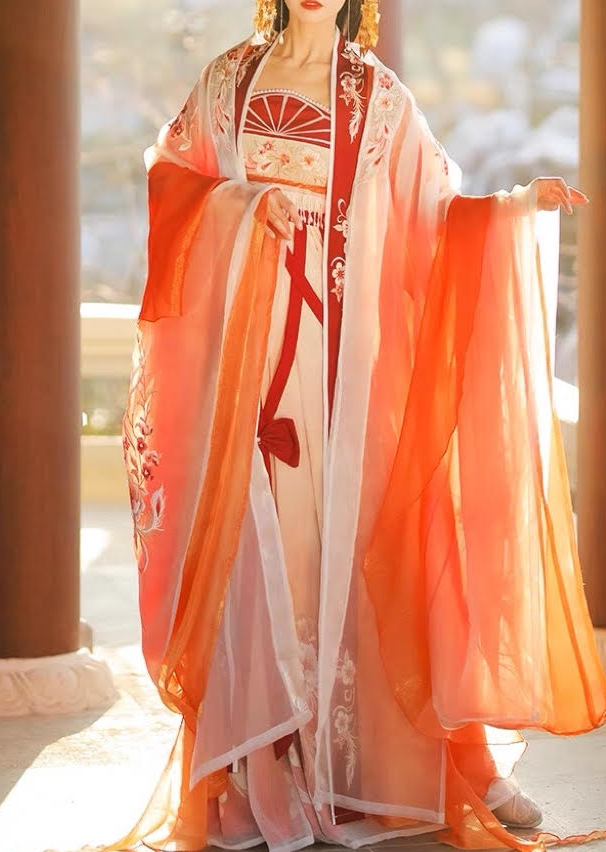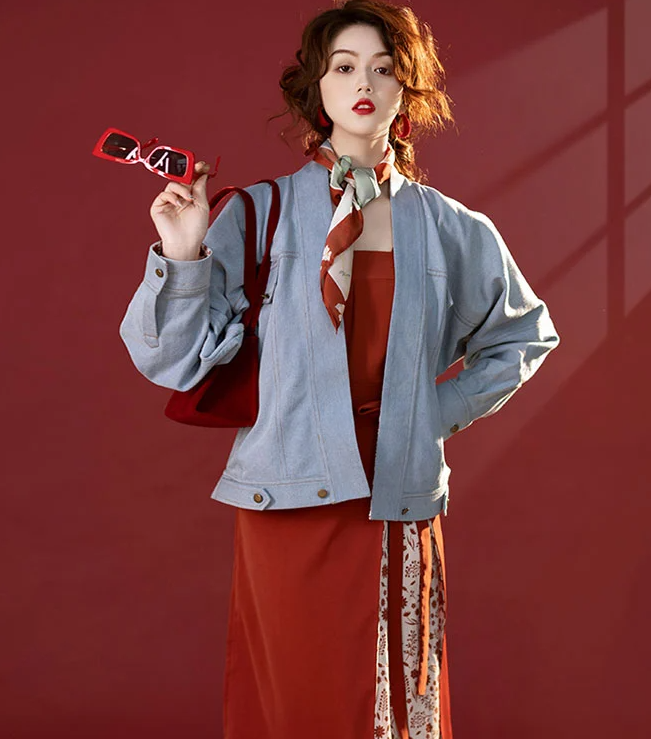Yes, Hanfu is worn in Hong Kong, especially among the younger generation, for special events, festivals, and cultural activities.
The Emergence of Hanfu in Hong Kong
Hong Kong, often seen as a melting pot of East and West, has recently witnessed an uptick in the popularity of Hanfu. Though Hong Kong is known for its cosmopolitan fashion sense, traditional Chinese garments like Hanfu are carving out their own niche. The emergence of Hanfu in this region owes much to social gatherings and online influences.

Hanfu Festivals and Events
One of the significant driving factors of Hanfu’s rising popularity in Hong Kong is the number of Hanfu-themed festivals and events. Festivals such as the Hanfu Cultural Festival aim to introduce the beauty and history of Hanfu to the Hong Kong public. These events often feature parades, dance performances, and stalls where artisans sell handcrafted Hanfu garments. Workshop sessions where people can learn about Hanfu’s historical significance and even try making simple garments themselves are another highlight. The positive buzz generated by these festivals does wonders for promoting Hanfu in a region where such traditional wear was often relegated to cultural shows and historical dramas.
Social Media Influence
Social media has become a colossal platform for the spread of Hanfu culture in Hong Kong. Influencers on platforms like Instagram and Weibo regularly post photos of themselves adorned in Hanfu, inspiring their followers to explore this facet of traditional Chinese culture. Popular YouTube channels focus on Hanfu fashion tips, the history behind the garments, and DIY methods of creating Hanfu accessories. Websites like Reddit even have dedicated forums where Hanfu enthusiasts in Hong Kong discuss where to buy the best garments, how to accessorize, and tips for making your own Hanfu. These online platforms serve as both a marketplace and a community for Hanfu lovers in Hong Kong.
Local Perception of Hanfu in Hong Kong
Hong Kong presents a unique socio-cultural landscape where East meets West, and this amalgamation of cultures has led to various viewpoints on Hanfu. While some see it as a revival of Chinese tradition, others may perceive it within a different context due to the city’s unique historical and political factors. Here, we delve into how local people in Hong Kong perceive the Hanfu movement.
Cultural Acceptance
The young generation, in particular, shows enthusiasm for embracing Hanfu. Many see wearing Hanfu as an act of cultural reclamation and take pride in showcasing their heritage. Special occasions like Chinese New Year and Mid-Autumn Festival are increasingly featuring Hanfu as part of the celebrations. Schools are also beginning to incorporate Hanfu into their Chinese history and culture curriculums, allowing students to wear them during specific events or activities.
Local fashion designers are starting to incorporate Hanfu elements into modern wear, blending the traditional with the contemporary. This innovative approach further amplifies Hanfu’s cultural acceptance, making it more approachable for those who may not be familiar with the full traditional attire.
The Political Context
In Hong Kong, any discussion about cultural identity often intertwines with politics due to its unique relationship with mainland China. Some people see the Hanfu movement as an extension of the “soft power” China wields in promoting its culture. There is also the question of how Hanfu fits into Hong Kong’s multi-layered identity, which includes British colonial history as well as its Chinese roots.
However, many Hong Kong residents appreciate Hanfu without associating it with political symbolism. They treat it as an individual fashion choice or a cultural expression rather than a statement about political allegiance. Even in political protests, some activists have adopted Hanfu to symbolize various interpretations of freedom, democracy, and cultural pride, illustrating the garment’s complex role in Hong Kong’s socio-political landscape.
Comparison with Other Traditional Outfits in Hong Kong
Hong Kong’s rich cultural tapestry includes a variety of traditional outfits, each with its own historical significance and modern relevance. While Hanfu has seen a resurgence in popularity, it is far from the only traditional outfit worn or appreciated in this cosmopolitan city. This section will compare Hanfu with other key traditional outfits that have made a mark in Hong Kong’s fashion landscape, focusing on Cheongsam/Qipao and the influence of Western styles.
Cheongsam/Qipao
The Cheongsam, or Qipao, is another iconic Chinese garment that has a distinct presence in Hong Kong. Often identified with its sleek, form-fitting design and high collar, the Cheongsam contrasts Hanfu in many ways. While Hanfu takes inspiration from various Chinese dynasties, the Cheongsam has a more modern origin, evolving mainly during the early 20th century. Both, however, have become symbols of Chinese culture and femininity, often worn during special events like weddings and festivals.
Interestingly, while Hanfu generally represents a broader, more historical Chinese cultural identity, the Cheongsam tends to have more localized adaptations. For instance, Hong Kong’s version might incorporate more Western elements like sequins or beadwork. Some local designers even create fusion garments that combine elements of both Hanfu and Cheongsam, showcasing Hong Kong’s unique cultural diversity.
Western Influences
Hong Kong was a British colony for over a century, and this colonial history has left an indelible impact on its fashion scene, including its traditional outfits. Suits and gowns, inspired by British and European styles, often appear in formal settings and ceremonies, such as graduation events and official banquets. Even the Cheongsam has seen Western elements integrated into its design, as mentioned earlier.
When it comes to Hanfu, the impact of Western fashion is less obvious but still present. Modern-day Hanfu adaptations in Hong Kong sometimes feature cuts or accessories that reflect a Western aesthetic, like adding lace or using unconventional fabrics. While Hanfu purists may frown upon these modifications, they demonstrate how this traditional garment is evolving in a multicultural city.
Challenges and Controversies
As Hanfu gains more attention in Hong Kong’s fashion and cultural scenes, it also attracts a series of challenges and controversies that need addressing. From questions of authenticity to generational differences, these issues often spark heated debates among the Hanfu community and the general public.
Authenticity Concerns
One of the foremost challenges is the issue of authenticity. As Hanfu has evolved through several Chinese dynasties, each with its own style and materials, determining what constitutes an “authentic” Hanfu garment can be complex. Some enthusiasts argue that only those made with traditional materials and methods can be considered genuine, while others contend that modern adaptations are also valid forms of cultural expression.
This dilemma is not unique to Hanfu but exists in the wider realm of cultural heritage preservation. Nonetheless, the ambiguity around what is considered ‘authentic’ can create tensions among different factions within the Hanfu community. Some purists worry that these modern iterations dilute the cultural and historical essence of the garment.

Generational Gap
While younger generations are more inclined to embrace Hanfu, often seen donning the outfit at festivals or special occasions, older generations in Hong Kong might view Hanfu with a mixture of nostalgia and skepticism. They may associate the garment more strongly with historical dramas or Chinese folklore than with modern fashion or cultural expression.
Moreover, the older generation may also hold strong views about other traditional outfits like the Cheongsam or even Western suits, which they might consider more appropriate for formal settings. This generational gap reflects broader changes in how different age groups perceive Chinese identity and tradition in a rapidly evolving cultural landscape.
Market Analysis
The rising popularity of Hanfu in Hong Kong is not just a cultural phenomenon; it’s also a burgeoning market that offers business opportunities. From physical stores to online platforms, the Hanfu market is expanding and adapting to consumer demands. This section provides a detailed look at how the Hanfu market is shaping up in Hong Kong.
Hanfu Shops in Hong Kong
Physical shops selling Hanfu are becoming more common in Hong Kong’s bustling shopping districts like Mong Kok and Tsim Sha Tsui. These shops often offer a range of Hanfu styles that cover various historical periods, giving consumers a broad array of choices. Some even offer customization services, where customers can choose the fabric, design, and accessories to create a unique Hanfu outfit.
However, these shops also face stiff competition, not just from each other but also from stores selling other traditional outfits like Cheongsams or Western formal wear. Being relatively new entrants in the fashion market, Hanfu shops must work hard to build brand recognition. They often participate in or sponsor local Hanfu events to garner attention and attract a dedicated customer base.
Online Retailers and Popularity
The internet has proven to be a robust platform for promoting and selling Hanfu. Online retailers have the advantage of reaching a broader audience, not just within Hong Kong but globally. Websites and apps offer convenience and variety, often presenting customers with a more extensive range of options than physical stores.
Social media platforms, particularly Instagram and Weibo, serve as both promotional channels and review sites. Consumers often post photos of their new Hanfu, providing free advertising for these online retailers. Additionally, online forums and e-commerce platforms often host discussions about the quality, pricing, and authenticity of various Hanfu brands, giving potential buyers more information to make an informed decision.
In this digital age, online sales figures show a consistent increase, pointing to a favorable market trend for Hanfu. Data analytics further suggest that the majority of online Hanfu customers in Hong Kong are young adults, indicating a promising future for this traditional garment in the digital marketplace.